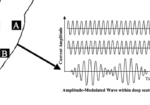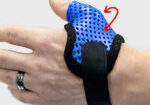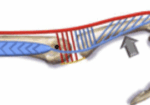Comparing Edema and Lymphedema: Understanding the Differences and Treatment Approaches in Hand Therapy
Filed under Treatments
Comparing Edema and Lymphedema: Understanding the Differences and Treatment Approaches in Hand Therapy
As hand therapists we often encounter patients presenting with swollen arms, hands, and/ or fingers, often attributing these symptoms to various conditions. Two commonly confused terms in this area are “edema” and “lymphedema.” While both involve swelling, they have distinct causes, presentations, and treatment strategies. Understanding these differences is important for accurate diagnosis and effective treatment.
Understanding Edema
Edema is a broad term that refers to the swelling caused by excess fluid trapped in the body’s tissues. This condition can occur anywhere in the body but is most commonly observed in the limbs such as the hands, feet, and ankles.
Causes of Edema
- Injury/Trauma: This includes sprains, fracture, or any kind of trauma can lead to localized swelling.
- Inflammation: Conditions like arthritis or infections can cause inflammation and subsequent swelling.
- Venous Insufficiency: Poor circulation, often due to varicose veins, can result in fluid accumulation.
- Heart, Kidney, or Liver Disease: These conditions can lead to fluid imbalance and widespread edema.
- Medications: Certain drugs such as steroids and antihypertensives can cause fluid retention.
Symptoms of Edema
- Swelling or puffiness of the skin.
- Stretched or shiny skin.
- Increased size of the affected limb.
- Difficulty moving the joint near the swelling.
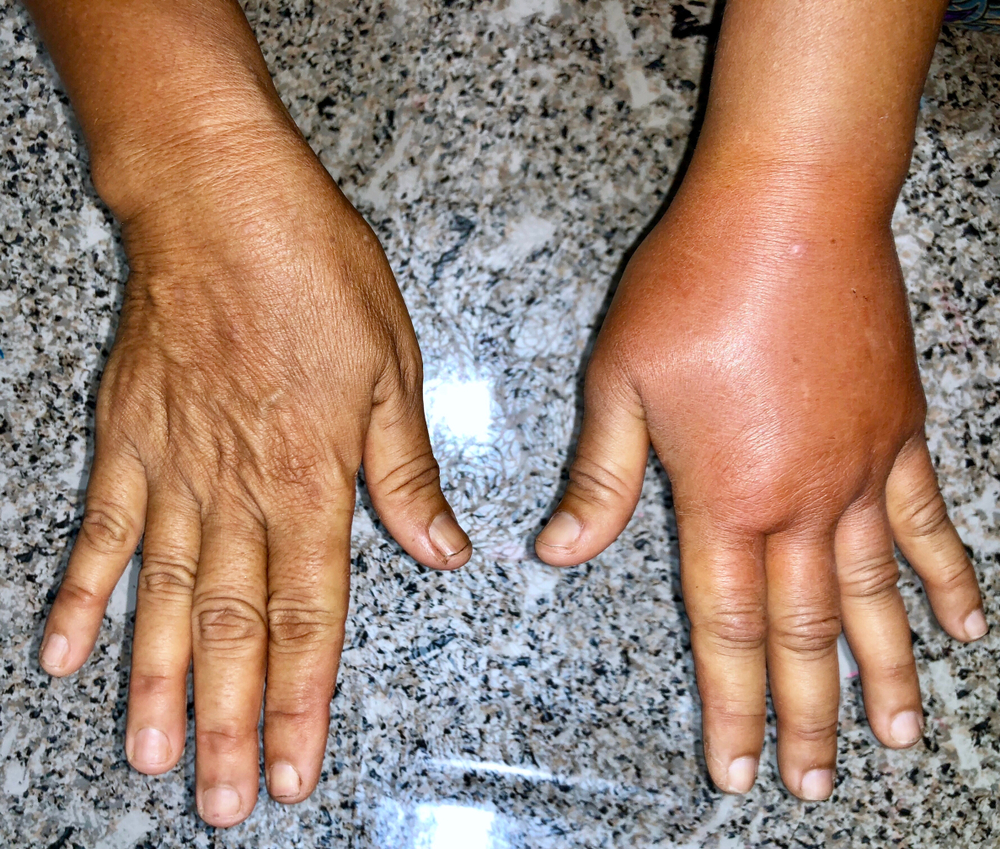
Treatment of Edema
Treatment focuses on addressing the underlying cause and reducing the swelling. Common approaches include:
- Elevation: Raising the affected limb above heart level.
- Compression: Using compression garments to reduce fluid buildup.
- Range of Motion: Gentle exercises such as tendon glides improve circulate and reduce swelling.
- Using a chip bag: the different densities of foam in a stockinette
- Massage: using retrograde edema massage can be helpful
- Medication: Diuretics may be prescribed to help the body expel excess fluid.
For more tips on managing edema check out this blog post https://www.handtherapyacademy.com/uncategorized/managing-ue-edema-in-hand-therapy/
Understanding Lymphedema
Lymphedema specifically refers to swelling that occurs due to a compromised lymphatic system, resulting in the accumulation of lymphatic fluid. It most commonly affects the arms or legs but can occur in other parts of the body.
Causes of Lymphedema
- Primary Lymphedema: A rare, inherited condition that causes problems with lymph vessel development.
- Secondary Lymphedema: More common and typically results from damage to the lymphatic system due to surgery, radiation therapy, infection, or trauma.
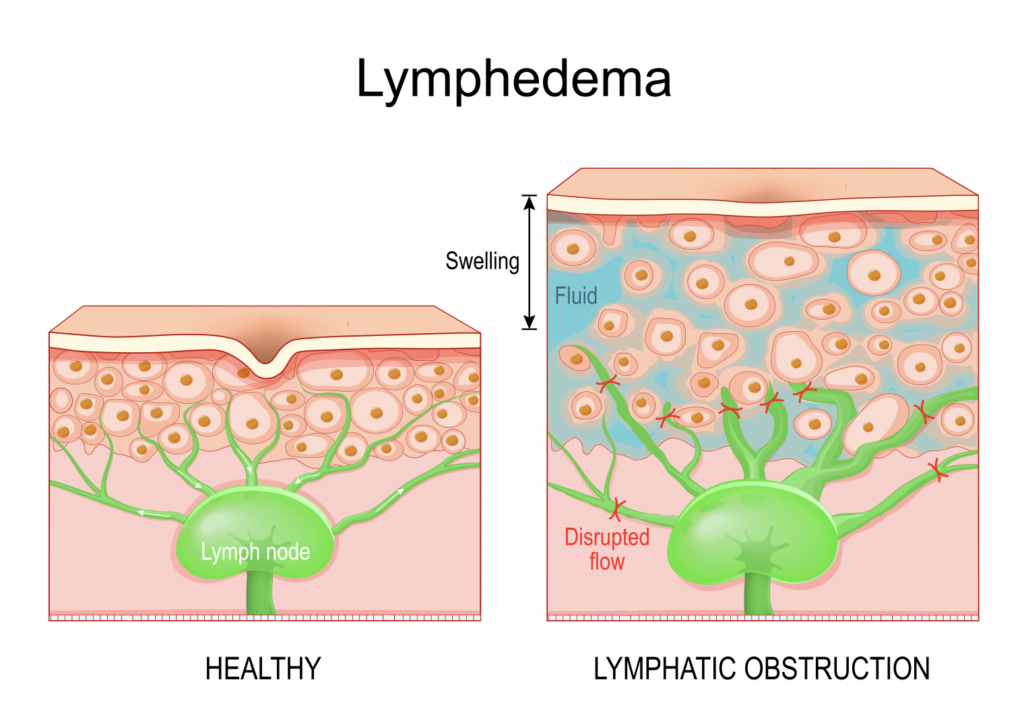
Symptoms of Lymphedema
- Persistent swelling, often in the arm or leg.
- A feeling of heaviness or tightness in the affected area.
- Restricted range of motion.
- Recurring infections.
- Hardening or thickening of the skin (fibrosis) in severe cases.
Treatment of Lymphedema
While lymphedema is a chronic condition with no cure, effective management strategies can help control the symptoms:
- Manual Lymphatic Drainage (MLD): A specialized massage technique to stimulate the movement of lymph fluid.
- Compression Therapy: Use of bandages or compression garments to support lymphatic drainage.
- Exercise: Tailored exercises to promote lymph fluid movement.
- Skin Care: Preventing infections through meticulous skin care.
- Surgical Options: In severe cases, surgical interventions like lymph node transfer or liposuction may be considered.
Key Differences Between Edema and Lymphedema
- Cause: Edema results from fluid leakage due to various reasons, while lymphedema is specifically due to lymphatic system impairment.
- Location and Presentation: Edema can be more generalized, while lymphedema often affects a specific limb or area and is usually unilateral.
- Chronicity: Edema may resolve with treatment of the underlying cause, whereas lymphedema is typically a lifelong condition requiring ongoing management.
Conclusion
Distinguishing between edema and lymphedema is essential for effective treatment and improving patient outcomes. As hand therapists, recognizing the unique characteristics and appropriate interventions for each condition ensures that patients receive the best possible care. By staying informed about the latest techniques and treatments, we can help our patients manage their symptoms and enhance their quality of life.
More To Read
IFC vs TENS: Electrical Stimulation for Pain and Swelling
In this article we’re looking at the difference between Inferential Current versus Transcutaneous Electric Nerve Stimulation (IFC vs TENS). Transcutaneous Electric Nerve Stimulation (TENS) TENS variations are often described by their technical characteristics: high frequency, low intensity (conventional TENS) or low frequency, high intensity (acupuncture-like TENS, AL-TENS) (Walsh et al., 2009). How TENS Addresses Pain:…
Read MoreCMC Arthritis Orthosis in the Hand: Mechanics and Purpose
One of the most common diagnoses we see in hand therapy is osteoarthritis of the 1st carpo-metacarpal joint where the metacarpal articulates with the trapezium. Also known as basal joint arthritis (CMC arthritis), this causes pain, joint deformity, loss of strength and loss of function. Patients come to us looking for relief of symptoms and…
Read MoreINTEROSSEOUS MUSCLE TIGHTNESS TESTING
May 2012 No. 19 INTEROSSEOUS MUSCLE TIGHTNESS TESTING Judy Colditz, OT/L, CHT, FAOTA INTEROSSEOUS MUSCLE TIGHTNESS TESTING – ARE YOU DOING IT CORRECTLY? The common term “Intrinsic Tightness Testing” is a misnomer as it describes a maneuver specifically designed to test tightness of the interosseous muscles. The interosseous muscles are small, short-fibered muscles contained within…
Read MorePhantom Limb Pain, Residual Limb Pain, & Phantom Limb Sensation: Which is Which?
Written by Melissa Miller Introduction After amputation, the majority of individuals will experience phantom limb pain (PLP), residual limb pain (RLP), and/or phantom limb sensation (PLS). Experiencing these pains or sensations can greatly disrupt an individual’s quality of life. It is important to know what each of these are as each can impact the client…
Read MoreSign-up to Get Updates Straight to Your Inbox!
Sign up with us and we will send you regular blog posts on everything hand therapy, notices every time we upload new videos and tutorials, along with handout, protocols, and other useful information.


